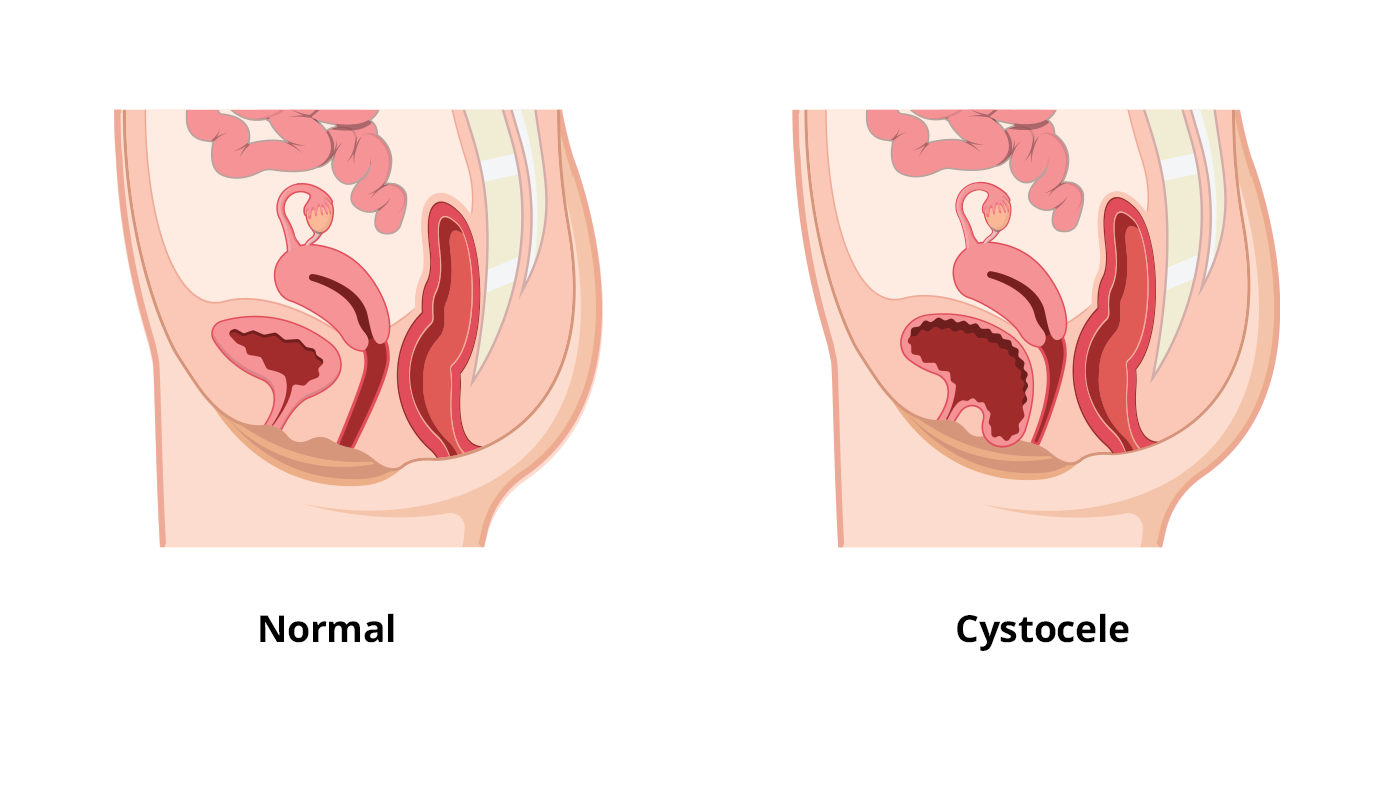Prolapse means "to fall out of place". Pelvic organ prolapse (POP) occurs when the vaginal walls, uterus, or both lose their normal support and fall out of place. Other nearby pelvic organs, such as the bladder or bowel, may be involved and also ‘drop’ from their normal position in the body. Cystocele is the most common type of POP.
Cystocele, or prolapsed bladder, is a common condition in women, where supportive tissues around the bladder and vaginal wall weaken and stretch. This allows the bladder to push the front wall of the vagina backwards, causing a bulge in the vagina.
How common is a cystocele?
The incidence of cystocele is not known since many women do not seek care from a health care professional and the condition is underdiagnosed. However, it’s estimated that nearly half of women who have given birth have some degree of pelvic organ prolapse although for the majority of these it will not cause them any symptoms. About 10% of women will experience symptomatic prolapse.
Who is affected?
A cystocele can affect women of any age but also increase with age because muscles and tissues often become weaker over time.
Other factors that increase the risk of having a cystocele include:
- giving birth vaginally
- having a history of pelvic surgery
- being overweight or having obesity
- having a chronic cough
- repeated heavy lifting or high impact exercising
What are the complications of a cystocele?
A cystocele may put pressure on or lead to a kink in the bladder outlet tube (urethra) making it difficult to pass urine which can lead to urinary retention, a condition in which you are unable to empty all the urine from your bladder. In rare cases, a cystocele may result in a kink in the tubes that connect the bladder to the kidneys (ureters) and cause urine to build up in the kidney, which could lead to kidney damage.

What are the symptoms of a cystocele?
Typical symptoms of a cystocele include:
- pressure in the vagina or pelvis
- a vaginal bulge or the feeling that something is falling out of the vagina
- urine leakage (urinary incontinence)
- difficulty starting the flow of urine (hesitancy)
- a slow urine stream
- feeling the need to urinate after finishing urination
- frequent or urgent urination
Which management options are available for cystocele?
Pelvic floor exercises.
By strengthening the pelvic floor muscles, they can provide good support to hold the bladder in place and stop urine from leaking.
Vaginal pessary.
A pessary is a small silicone device that is inserted into the vagina to support the vaginal wall and hold the bladder in place.
Surgery.
Surgery may be the option if nonsurgical treatments don’t work or when the cystocele is severe.
Intermittent catheterization (IC).
IC may reduce symptoms of cystocele by completely emptying the bladder and reducing the risk of urine leaking.
Bowel management.
Transanal irrigation may reduce symptoms by preventing and treating constipation. A full (constipated) bowel makes it harder to empty the bladder.